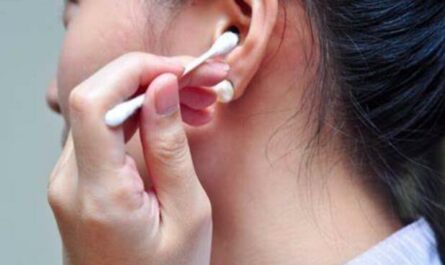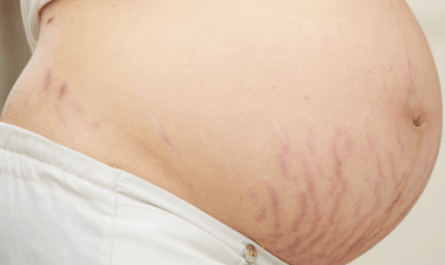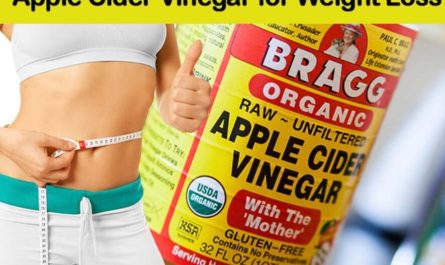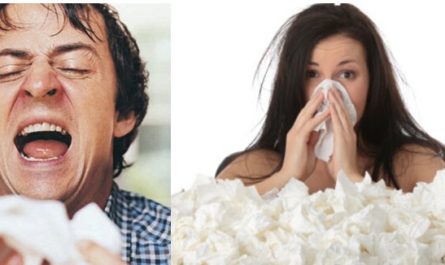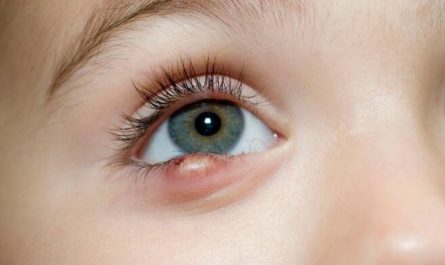Corns and calluses are common foot conditions that can cause discomfort and pain. These thickened areas of skin often develop as a result of friction and pressure from ill-fitting shoes or abnormal foot structure. While there are various over-the-counter treatments available, many people prefer natural remedies. This article will explore 14 home remedies that can help soften and remove corns and calluses. These remedies utilize simple ingredients that can be found in most households.
What are Corns and Calluses?
Corns are small, and round, and usually have a hard center surrounded by inflamed skin. They commonly develop on the tops and sides of the toes, as well as on the soles of the feet. Corns can be painful, especially when pressure is applied to them. They often form as a result of wearing tight or ill-fitting shoes, excessive walking or running, or abnormal foot structure.
Calluses are larger and broader than corns, with a more diffuse thickening of the skin. They tend to develop in weight-bearing areas such as the soles of the feet or the palms of the hands. Unlike corns, calluses are typically not painful, but they can cause discomfort if they become excessively thick or cracked. Calluses often form as a natural defense mechanism to protect the skin from repeated friction and pressure.
Both corns and calluses are usually harmless, but they can cause discomfort and cosmetic concerns. It is important to properly manage and treat corns and calluses to prevent complications such as infections or ulcers, especially for individuals with diabetes or compromised circulation.
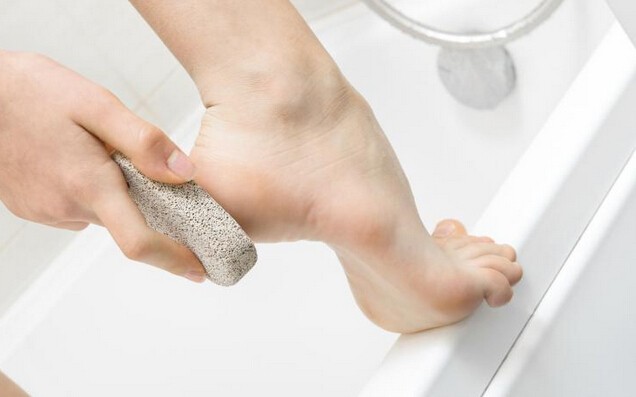
Common Causes of Corns and Calluses
Understanding the causes behind these conditions is crucial in preventing and managing them effectively.
1. Friction and Pressure
The primary cause of corns and calluses is excessive friction and pressure on the skin. This often occurs when ill-fitting shoes, high heels, or tight footwear rub against the skin repeatedly. The constant friction and pressure lead to the thickening of the skin, resulting in the formation of corns and calluses.
2. Improper Footwear
Wearing shoes that do not provide adequate support or have narrow toe boxes can increase the risk of corns and calluses. Shoes that are too tight can squeeze the toes together, causing friction and pressure.
On the other hand, loose shoes can cause the foot to slide and rub against the shoe. This will lead to the development of these foot conditions.
3. Abnormal Foot Structure
Certain foot abnormalities, such as hammertoes or bunions, can contribute to the formation of corns and calluses. These conditions alter the way weight is distributed on the foot, resulting in excessive pressure on certain areas. People with flat feet or high arches may also be more prone to developing corns and calluses.
4. Occupational Factors
Certain occupations or activities that involve repetitive motions or prolonged standing can increase the risk of corns and calluses.
For example, athletes, dancers, and construction workers are more susceptible to developing these foot conditions due to the constant friction.
5. Foot Deformities
Certain foot deformities, such as claw toes or mallet toes, can increase the risk of corns and calluses. These deformities cause the toes to bend abnormally, resulting in increased pressure and friction in specific areas.
6. Age-related Changes
As we age, the skin naturally becomes thinner and loses some of its elasticity. This can make the skin more susceptible to friction and pressure, increasing the likelihood of developing corns and calluses.
7. High-Impact Activities
Engaging in high-impact activities like running or jumping can put additional stress on the feet, leading to the development of corns and calluses. The repetitive motion and impact can cause friction and pressure, especially when wearing improper footwear.
8. Abnormal Gait or Walking Pattern
An abnormal gait or walking pattern can lead to uneven weight distribution on the feet. This can cause excessive pressure on certain areas and result in the development of corns and calluses.
14 Home Remedies to Get Rid of Corns and Calluses Fast
1. Warm Water Soak with Epsom Salt
Soaking your feet in warm water with Epsom salt helps soften the corns and calluses. This will make them easier to remove. Epsom salt, also known as magnesium sulfate, has exfoliating properties that can gently slough off dead skin cells.
- Fill a basin with warm water and add 1-2 tablespoons of Epsom salt.
- Stir the water to dissolve the salt.
- Soak your feet in the solution for 15-20 minutes.
- The warm water will help relax the muscles and soften the skin, while the Epsom salt promotes exfoliation.
- After soaking, gently rub the affected areas with a pumice stone in circular motions to remove dead skin.
- Rinse your feet with clean water and pat them dry.
- Apply a moisturizer to keep the skin hydrated.
2. Apple Cider Vinegar
Apple cider vinegar has acidic properties that help soften the hard skin of corns and calluses. It also has antimicrobial properties that can help prevent infections.
- Soak a cotton ball in apple cider vinegar.
- Place the soaked cotton ball on the affected area and secure it with a bandage or tape.
- Leave it on overnight.
- The apple cider vinegar will work to soften the corn and calluses while you sleep.
- In the morning, remove the bandage and rinse your feet with water.
- Gently exfoliate the softened skin with a pumice stone in circular motions.
- Rinse your feet again and pat them dry.
- Apply a moisturizer to keep the skin hydrated.
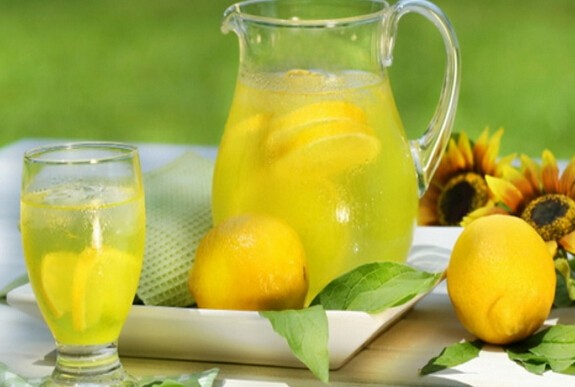
3. Lemon Juice
Do you know that lemon can be good for your feet to remove corn as well? Lemon juice contains natural acids, such as citric acid, that can help dissolve the thickened skin of corns and calluses. It also has antibacterial properties that can help prevent infections.
- Squeeze fresh lemon juice into a bowl.
- Dip a cotton ball into the lemon juice and apply it directly to the affected areas.
- Let it sit for 15-20 minutes.
- The lemon juice will work to break down the dead skin cells and soften the corns and calluses.
- Rinse your feet with water and gently scrub the softened skin with a pumice stone in circular motions.
- Rinse your feet again and pat them dry.
- Apply a moisturizer to keep the skin hydrated.
4. Castor Oil
Castor oil has moisturizing properties that can help soften corns and calluses, making them easier to remove. It also contains ricinoleic acid, which has anti-inflammatory properties.
- Apply a few drops of castor oil directly to the affected areas.
- Massage the oil into the skin for a few minutes.
- Cover your feet with clean socks and leave them on overnight.
- The castor oil will work to hydrate and soften the corns and calluses while you sleep.
- In the morning, rinse your feet with water and gently exfoliate with a pumice stone in circular motions.
- Rinse your feet again and pat them dry.
- Apply a moisturizer to keep the skin hydrated.
5. Baking Soda
Do you know that baking soda contains exfoliating properties that can help get rid of corn at the soonest possible time? Baking soda has exfoliating properties that can help remove dead skin cells. This will help reduce the thickness of corns and calluses. In addition, It also has antibacterial properties that can help prevent infections.
- Mix 3 tablespoons of baking soda with enough water to form a paste.
- Apply the paste to the affected areas and let it sit for 10-15 minutes.
- The baking soda paste will work to exfoliate the dead skin cells and soften the corns and calluses.
- Rinse your feet with water and gently scrub the softened skin with a pumice stone in circular motions.
- Rinse your feet again and pat them dry.
- Apply a moisturizer to keep the skin hydrated.
6. Chamomile Tea
Chamomile tea has anti-inflammatory properties that can help soothe irritated skin caused by corns and calluses. It also has antioxidant properties that can promote healing.
- Brew a cup of chamomile tea and let it cool.
- Soak a clean cloth or cotton ball in the cooled tea.
- Apply the tea-soaked cloth or cotton ball to the affected areas for 15-20 minutes.
- The chamomile tea will work to reduce inflammation and provide relief to the corns and calluses.
- Repeat this remedy twice a day for best results.
- Afterward, rinse your feet with water and pat them dry.
- Apply a moisturizer to keep the skin hydrated.
7. Garlic
Garlic has antimicrobial properties that can help prevent infections and promote healing of corns and calluses. It also contains compounds that can reduce inflammation.
- Crush a few garlic cloves to form a paste.
- Apply the garlic paste to the affected areas and cover them with a bandage or tape.
- Leave it on overnight.
- The garlic paste will work to fight off any potential infections and reduce inflammation.
- In the morning, rinse your feet with water and gently exfoliate with a pumice stone in circular motions.
- Rinse your feet again and pat them dry.
- Apply a moisturizer to keep the skin hydrated.
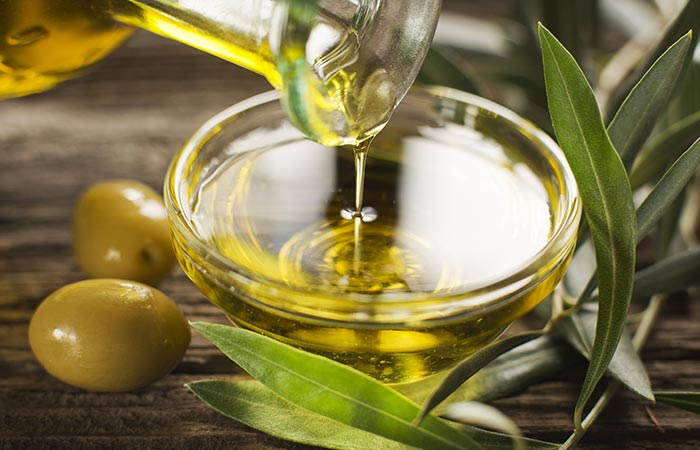
8. Tea Tree Oil
Tea tree oil has antimicrobial and antifungal properties that can help prevent infections and reduce inflammation. It also has soothing properties that can provide relief from discomfort.
- Mix a few drops of tea tree oil with a carrier oil, such as coconut oil or olive oil.
- Apply the diluted tea tree oil to the affected areas and massage it into the skin.
- Leave it on for a few hours or overnight.
- The tea tree oil will work to fight off any potential infections and reduce inflammation.
- Rinse your feet with water and gently scrub the softened skin with a pumice stone in circular motions.
- Rinse your feet again and pat them dry.
- Apply a moisturizer to keep the skin hydrated.
9. Onion
There are some people who are surprised that Onions is part of this list. Onions have anti-inflammatory properties that can help reduce swelling and discomfort caused by corns and calluses. They also contain compounds that can promote healing.
- Slice a fresh onion and place the slices directly on the affected areas.
- Cover your feet with clean socks and leave it overnight.
- The onion slices will work to reduce inflammation and provide relief.
- In the morning, rinse your feet with water and gently exfoliate with a pumice stone in circular motions.
- Rinse your feet again and pat them dry.
- Apply a moisturizer to keep the skin hydrated.
10. Oatmeal
Oatmeal has soothing properties that can help relieve itching and inflammation associated with corns and calluses. It also has exfoliating properties that can remove dead skin cells.
- Grind oatmeal into a fine powder.
- Mix the oatmeal powder with water to form a paste.
- Apply the paste to the affected areas and let it sit for 15-20 minutes.
- The oatmeal paste will work to soothe the skin and provide relief from itching and inflammation.
- Rinse your feet with water and gently scrub the softened skin with a pumice stone in circular motions.
- Rinse your feet again and pat them dry.
- Apply a moisturizer to keep the skin hydrated.
11. Turmeric
Turmeric has anti-inflammatory properties that can help reduce swelling and discomfort caused by corns and calluses. It also has antioxidant properties that can promote healing.
- Mix turmeric powder with water to form a paste.
- Apply the paste to the affected areas and let it sit for 15-20 minutes.
- The turmeric paste will work to reduce inflammation and provide relief.
- Rinse your feet with water and gently scrub the softened skin with a pumice stone in circular motions.
- Rinse your feet again and pat them dry.
- Apply a moisturizer to keep the skin hydrated.
12. Pineapple
Pineapple contains an enzyme called bromelain, which has exfoliating properties that can help soften and remove dead skin cells. It also has anti-inflammatory properties that can reduce swelling.
- Cut a fresh pineapple slice and rub it directly on the affected areas for a few minutes.
- Let the juice sit on your skin for 10-15 minutes.
- The bromelain in the pineapple juice will work to exfoliate the dead skin cells and soften the corns and calluses.
- Rinse your feet with water and gently scrub the softened skin with a pumice stone in circular motions.
- Rinse your feet again and pat them dry.
- Apply a moisturizer to keep the skin hydrated.
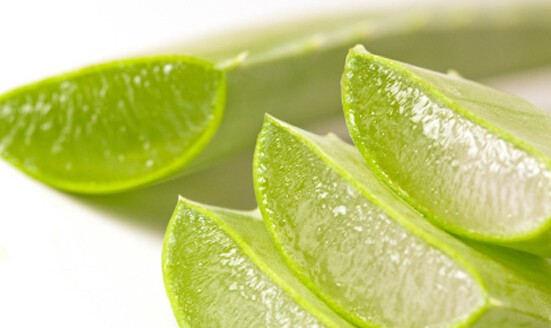
13. Aloe Vera
Aloe vera has soothing and moisturizing properties that can help reduce inflammation and soften corns and calluses. It also has antimicrobial properties that can help prevent infections.
- Extract fresh aloe vera gel from an aloe leaf.
- Apply the gel directly to the affected areas and massage it into the skin.
- Let it sit for 15-20 minutes.
- The aloe vera gel will work to soothe the skin and provide relief from inflammation and discomfort.
- Rinse your feet with water and gently scrub the softened skin with a pumice stone in circular motions.
- Rinse your feet again and pat them dry.
- Apply a moisturizer to keep the skin hydrated.
14. Vitamin E Oil
Vitamin E oil has moisturizing properties that can help soften and hydrate the skin, reducing the thickness of corns and calluses. It also has antioxidant properties that can promote healing.
- Pierce a vitamin E capsule and extract the oil.
- Apply the oil directly to the affected areas and massage it into the skin.
- Leave it on overnight.
- The vitamin E oil will work to moisturize and soften the corns and calluses while you sleep.
- In the morning, rinse your feet with water and gently exfoliate with a pumice stone in circular motions.
- Rinse your feet again and pat them dry.
- Apply a moisturizer to keep the skin hydrated.
When to see a doctor?
It is usually possible to treat and manage corns and calluses at home with the use of over-the-counter remedies and proper foot care. However, there are certain circumstances in which it is advisable to seek medical attention from a doctor:
- Severe Pain: If your corns or calluses are causing severe pain that is not relieved by home remedies or over-the-counter treatments, it is recommended to consult a doctor.
- Infection: If you notice signs of infection such as redness, warmth, swelling, pus, or increased pain, it is important to seek medical attention. Infections can occur when there is a break in the skin.
- Underlying Health Conditions: If you have underlying health conditions such as diabetes or poor circulation, it is crucial to consult a doctor. These conditions can increase the risk of complications and require specialized care.
- Difficulty Walking: If your corns or calluses are causing difficulty with walking or interfering with your daily activities, it is advisable to see a doctor.

